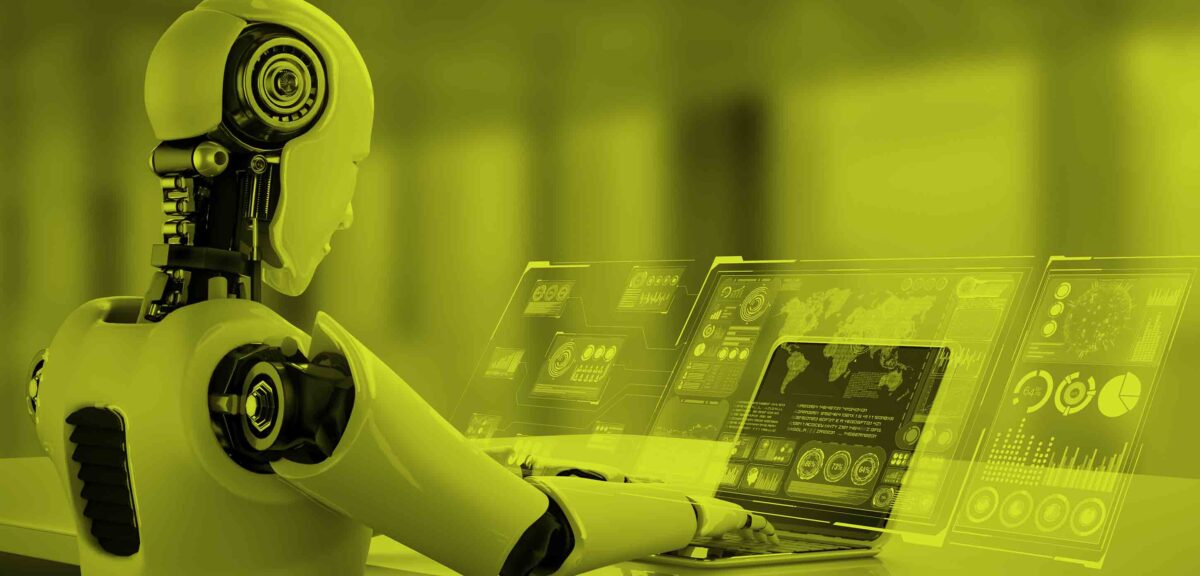Automation has revolutionised many industries, and graphic design and branding are no exception. The rise of machine learning and artificial intelligence has led to the development of automated graphic design tools, which can create logos, advertisements, and even entire websites without human intervention.
However, the question remains: can automation truly replace human designers?
AI Designers
First, let’s explore the benefits of automation in graphic design and branding. One of the primary advantages is speed. Automated design tools can create designs in a matter of seconds, whereas a human designer may take hours or even days to complete a project. Additionally, automation can be cost-effective, as it eliminates the need for hiring human designers, who can be expensive. Moreover, automation can be used to create designs that are more consistent and uniform, which can help to establish a strong brand identity. (Note: Us human graphic designers don’t agree with this point!)
Despite these benefits, there are several limitations to automation in graphic design and branding. One of the most significant limitations is the lack of creativity. While automated design tools can generate designs quickly, they lack the ability to think outside the box or come up with truly unique and original ideas. This can result in designs that are generic and uninspired, rather than tailored to the specific needs of a brand. Additionally, automation cannot replicate the human touch and emotional connection that a human designer can bring to a project.
Another limitation of automation in graphic design and branding is the lack of cultural context. Automated design tools are often developed with a specific cultural bias, which can lead to designs that are inappropriate or offensive in different cultural contexts. This can harm a brand’s reputation and lead to negative publicity, which can be difficult to overcome.
Human Designers
In contrast, human design brings a level of creativity, cultural awareness, and emotional connection that is difficult to replicate through automation. Human designers can tailor their designs to the specific needs of a brand, taking into account the brand’s values, mission, and target audience. Additionally, human designers can incorporate cultural nuances and avoid stereotypes, ensuring that the brand’s message is conveyed appropriately and respectfully.
Finally, human design offers a level of flexibility and adaptability that automation cannot match. Human designers can make adjustments and revisions to a design based on feedback from the client or changes in the market, ensuring that the brand stays relevant and up-to-date.
So a big thank you to AI for writing this blog so far… we’ll take it from here.
What you have just read has been written by OpenAI. Not bad. Very measured and fair in pointing out the pros and cons.
But where is the personality? Copy writers your profession is safe.
Testing AI Branding against Human Branding
To put this to the test, we took three logos that we designed for one of our clients and got AI aps to re design them. We gave same brief to AI that we got from our client. Here is what we found:
Watermark Coffee – Rebrand
The Brief: We want a logo that is smart, professional and attractive. As the original Watermark logo has already gained traction in the market, it would be wise to keep the new branding similar – so not moving too far from a simple icon and a wordstyle using the original colour palette.
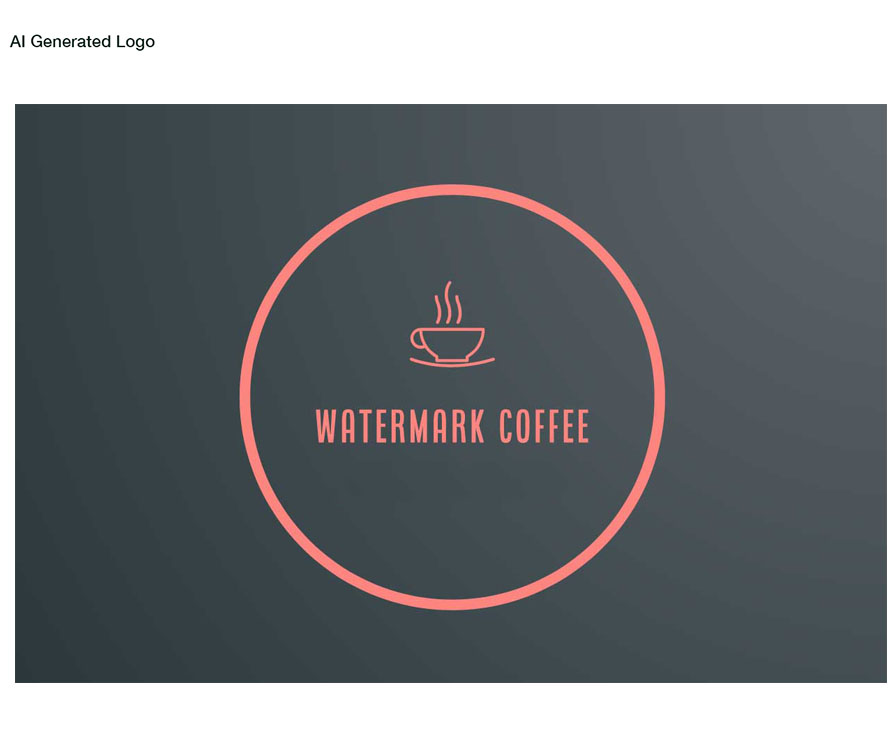
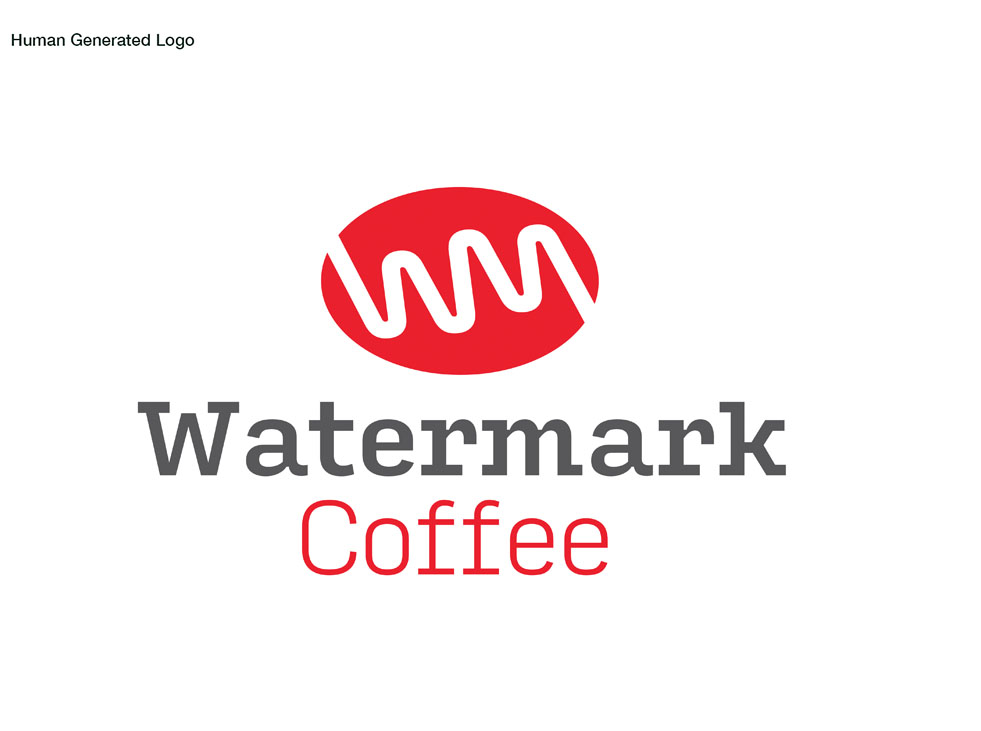
Watermark Logo Design by AI:
A coffee cup in a circle with brand name underneath the cup. Not original and very low impact. Nothing in common with the client’s original logo.
Watermark Logo Design by Human:
The Watermark logo uses the merged initials W and M in the centre of a red coffee bean. This creates a central wavy line. The new symbol represents flowing water – an essential element of a cup of coffee. When the coffee bean and the water are added together, they make the delicious coffee that is Watermark. Simple, stylish and recognisable branding.
Woodland Coffee – New Brand
The Brief: We want a logo that is recognisable as part of the Watermark family. Stylish and smart.
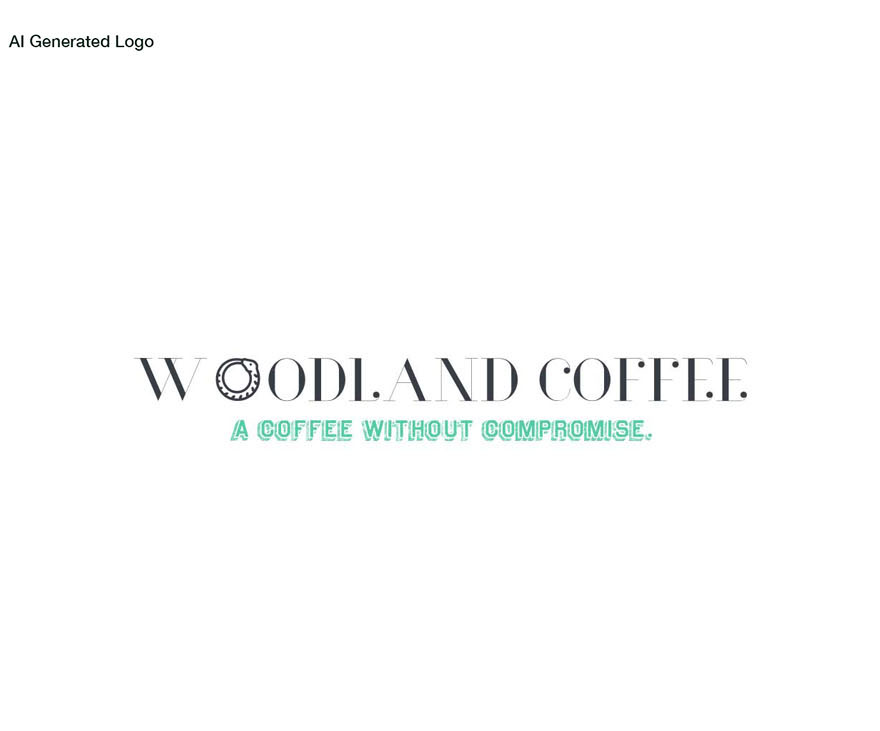
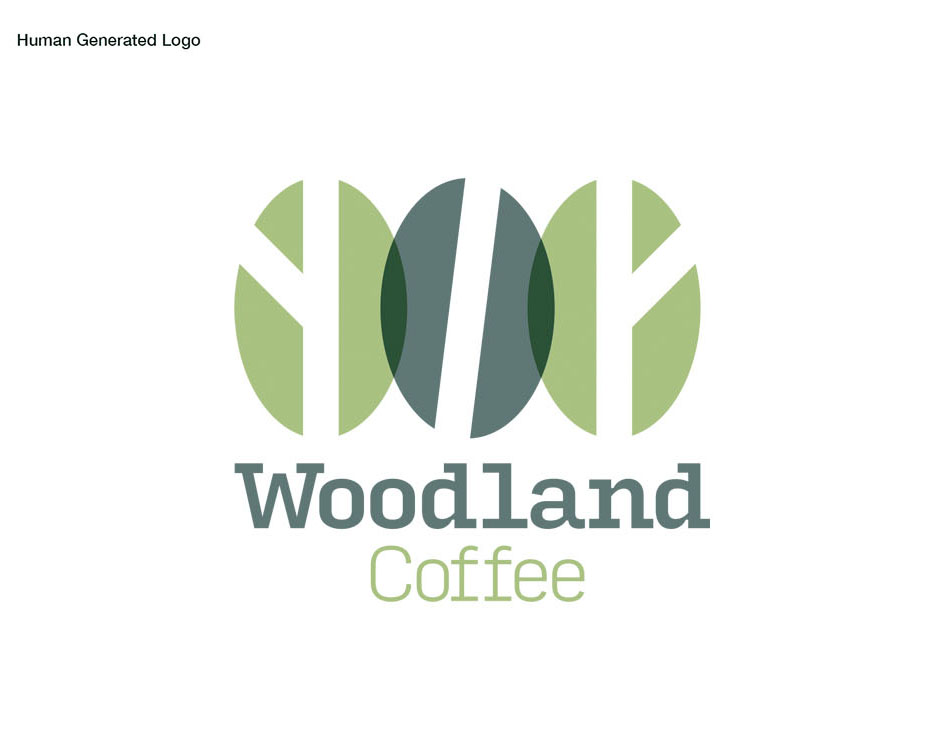
Woodland Logo Design by AI:
A snake makes up a letter ‘O’. Not really sure where that idea has come from as we are sure coffee and snakes aren’t really a good brand fit! Also no allowance for following on from the Watermark brand styling.
Woodland Logo Design by Human:
Simple, strong, contemporary and elegant. The three symbols show the coffee bean in the middle of the icon and the growing trees on either side. The trees are very simply represented as a growing branches. The two tree icons represent a forest. The three shapes are those of the coffee bean and a leaf. The leaf and branch shapes are purposely abstract so they are not recognisable as a particular species of tree. These shapes leave plenty of scope for creating ‘fun’ elements into the website and marketing collateral. The typeface is the same as the Watermark typeface to keep consistency.
Green Ocean Coffee – New Brand
The Brief: We want a logo that is elegant and uses the symbol of a sea horse. Clean and stylish.
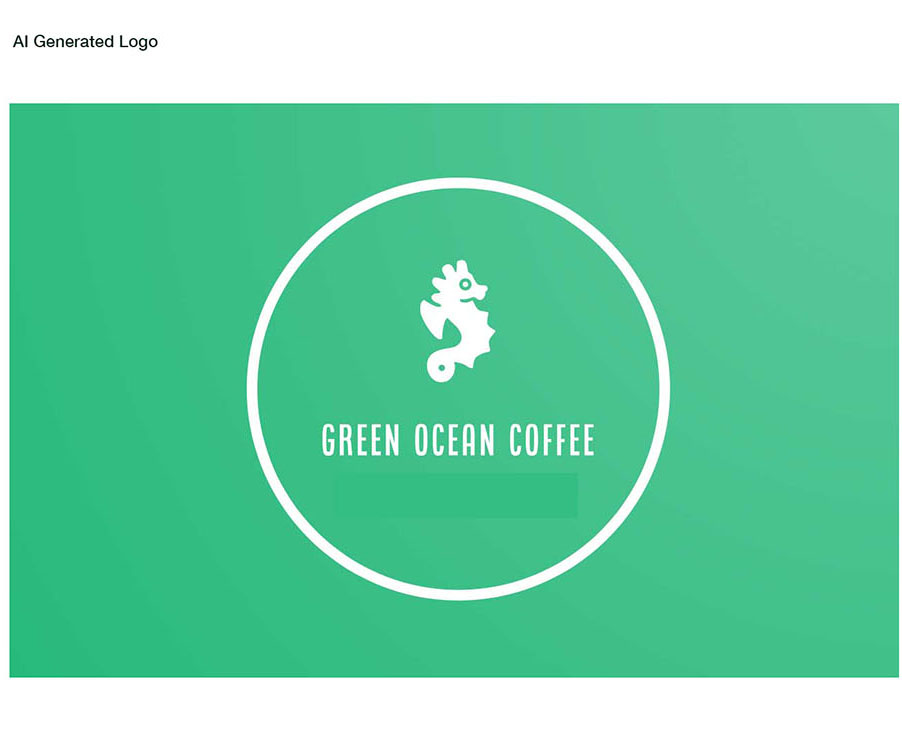
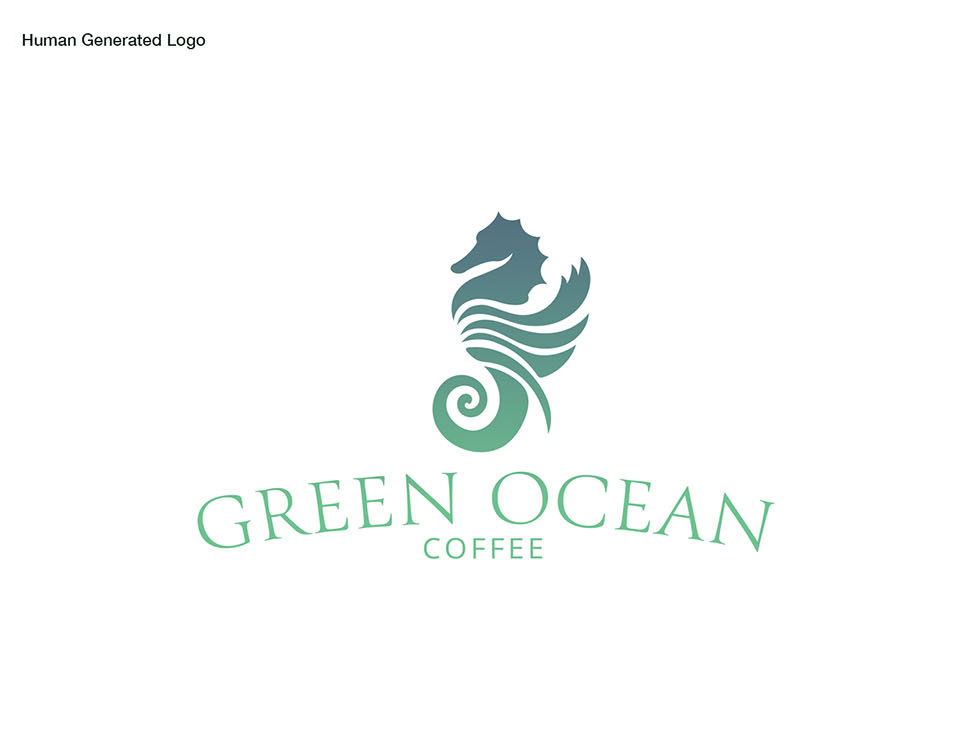
Green Ocean Coffee Logo Design by AI:
Another circle and em…we are not sure about this seahorse. Hope they are ok!
Green Ocean Coffee Logo Design by Human:
When seahorses wrap their tails around something, they hardly ever let go. That’s why they are a great symbol of persistence and patience. Seahorses remind us of the importance of a support system to rely on when the “waves” get too rough. Green Ocean Coffee, through persistence and patience, is about doing their part in tackling the threat of climate change by enhancing good marine habitats. We drew a very elegant seahorse using the colours of the ocean and used a soft but elegant typeface.
Conclusion – Here’s what we think
In conclusion, while automation has some benefits in graphic design and branding, it can’t possibly replace the creativity, emotional connection, and cultural awareness that human design brings. And that is the very crux of strong branding that works.
Automated design tools may be useful for generating quick, uniform designs, but human designers are still essential for creating truly unique, effective, and culturally sensitive designs that establish a brand’s identity and appeal to its target audience.
A Real Life Human Designer
So what do you think?
If you would like to see more human design have a look here.

